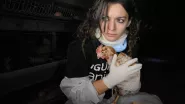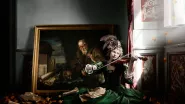The current Covid-19 pandemic era has come with some surprising news; cancer rates have dropped. Upon closer inspection, it becomes clear that this statistic is artificial. A result of deflated numbers from health care facilities that remain overwhelmed, leading fewer people to get screened for cancer than before the pandemic. Worldwide, cancer remains the second most frequent cause of death, making undiagnosed cases incredibly troubling. Early detection increases a person's chance of survival significantly, as it prevents having to treat cancer that has spread throughout the body. Undoubtedly preventative medicine remains the most effective medicine, yet most healthcare systems can not provide proper tools to their communities. For example, a yearly PET, or positron emission tomography, scan would greatly aid in reducing cancer fatalities. The greed of insurance companies and insecure health care administration aside, here we will be concerned with the screenings that happen outside of hospitals, those that occur through the patient's own lens.

Reflecting on photography in relation to cancer and medicine has a history. Pioneering British photographer Jo Spence, who was diagnosed with breast cancer in 1982, created work that advocated for her own health and for that of her community. Spence produced an extensive body of work primarily utilizing photo-therapy and self-portraiture, rallying against the way that capitalism has monetized death and illness.

It is imperative that Spence's contemporaries, photographers working on the topic of cancer in the twenty-first century, be given attention at the current moment. As the work compels people to advocate for themselves and find ways to get screened despite a lack of resources. Russian photographer Alyona Kochetkova's series When I was Ill documents her breast cancer journey from her diagnosis in July 2017 to the end of her medical treatment in March 2018. Her approach to the photographs mirrors the current urgency around breast cancer, outlining her goals in their creation as an aid in breaking "the stigma around the diagnosis and to allow people to better understand what a person facing serious disease feels like."

In many ways, this series parallels the lockdown experiences we have had over the last two years since Kochetkova's immune system was compromised during her chemo treatments, which kept her indoors. The windows in Kochetkova's apartment and in the cancer ward in the hospital become backdrops as well as the light sources in many of the images. The viewer is intimately invited into her everyday battles. We view Kochetkova as she forces herself to eat, despite having no appetite for the foods she used to enjoy. The color red reoccurs throughout the series, from the light she projects on her body from a laser pointer to represent bone pain, to the red of one of her chemotherapy drugs dripping through her IV.
© ALYONA KOCHETKOVA
A red that matches the alarm being raised about personal health all over the world. As we all have become hyper-aware of how fragile we can be and of how quickly we can become ill, we can draw strength from those who have found a way through the terrifying ordeal that is cancer. While hope may seem like a flimsy and watered-down term, the cross that hangs around Kochetkova's neck in her self-portraits leaves a lasting impression. When institutions or our health fail us, faith is still a powerful force, all the more effective when shared in images.








